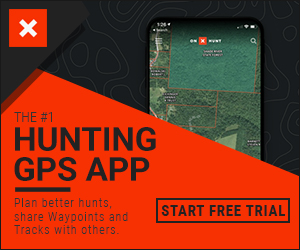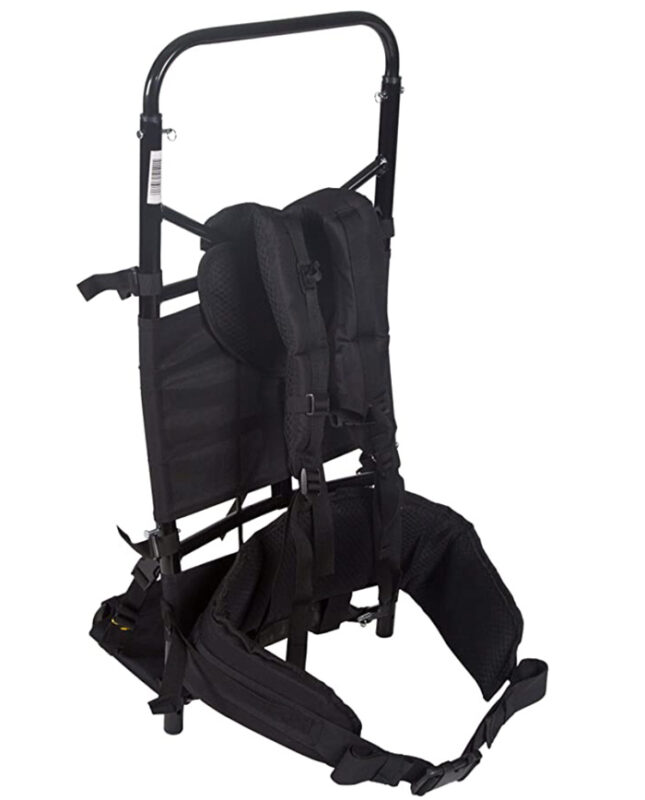Hunting
Shed Hunting Tips: The Ultimate Guide To Finding Antler Sheds
We understand that most of you who are reading this article fully understand what shed hunting is and are looking for the best shed hunting tips, but there might be a few who stumble across this article who aren’t familiar.
What is Shed Hunting?
Shed hunting is the searching/scavenging for antlers that have been shed by elk, deer, and moose. There are some shed hunters who seek them out to sell them. But on the other hand, others use sheds to assist in planning hunts for the coming year, and/or decorate their man or woman caves. Moreover, sheds are simply a neat thing to discover in the woods and is basically like a grown up Easter egg hunt!
Every year when the spring season begins, members of the deer family shed their antlers. They do this during the start of the year because of preparation for regrowth. Timing is essential for several reasons when it comes to shed hunting.
During the winter months, elk and deer are in their most vulnerable state. If you are an outdoors woman/man and hunter, this is the first and foremost thing that you have to remember. Moreover, it is necessary to leave them undisturbed so that they can survive through these hard months. You’ll want to check with your local game authorities to see what regulations exist for shed hunting in your local areas.
Why Shed Hunting?
There are lots of benefits you get from shed antler hunting. These days it has become an annual tradition for several hunters around the world.
Here are some of the benefits linked with shed antler hunting:
- Take Index of Deer: Deer start to shed their antlers in several states at the end of the season. Moreover, shed hunting is a great method to discover which familiar deer have made it in the season.
- Best Source of Exercise: When you go shed hunting, a notable amount of walking is usually conducted. This is the reason why it is considered as an excellent workout activity and a good source of exercise.
- Explorer as You Go: A huntress/hunter can discover several things about local deer migration patterns. Additionally, they also know how deer and elk utilize their environment based on the location of the discovered sheds.
- Antlers Can be Sold: If you found antlers at the time of shed hunting, then they can be sold for a profit. You will get the best price for the larger antlers, newer sets found – also known as “browns”.
- Enjoyable for Everyone: Shed antler hunting holds a name for being greatly enjoyable. It gives you the chance to spend time with your family and friends while also giving you another excuse to get out and enjoy the outdoors.
Shed Hunting Tips
1. Locate obstacles and the crossings
Examples of these types of obstacles:
- Fence crossing: This is a very good example as when a buck or bull tries jumping the fence, there are chances that the loosened antlers will shed. By knowing such a thing, a shed hunter can follow fence lines to scout for dropped antlers. This is one of our best shed hunting tips.
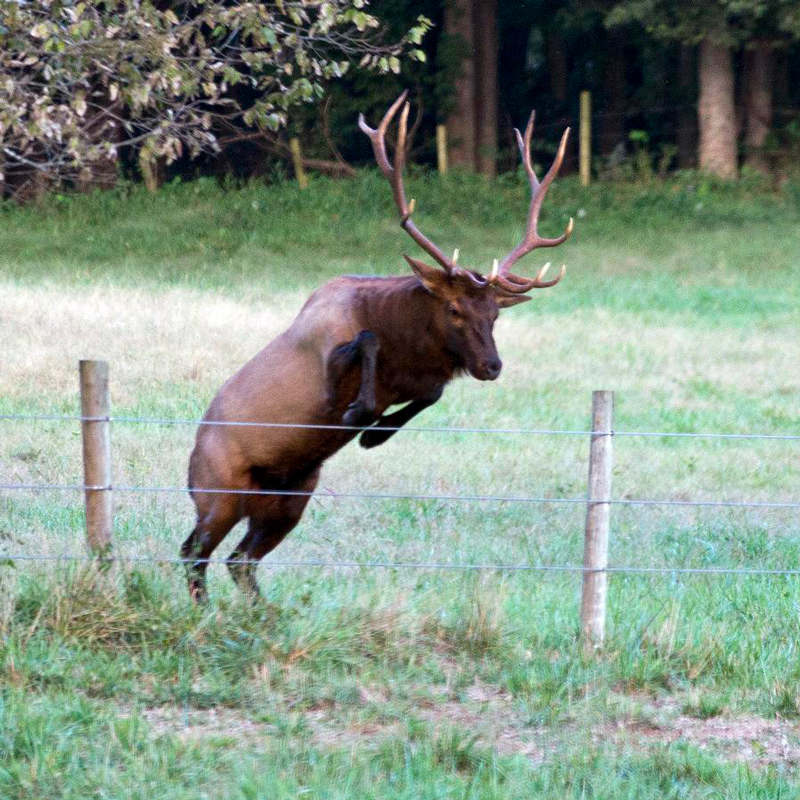
- Limbs, fallen treed, and other debris: Special attention can be given to sections of trails littered with the limbs as the deer and elk will often leap across the obstacles of this nature.
- Creek banks and crossings: The creek banks are good places where the antlers can be found as while deer cross these banks to go to the other side of the creek, the jolts that follow commonly result in loss of antlers in the process.
So in a nutshell, seek out places across the landscape that would cause an elk or deer to jump and land. That jolt motion is what we’re looking for.
2. Seek out bedding areas
This can be a very useful shed hunting tip as most of the antlers are in the locations where the deer spend most of their time. These places are where they usually rest. Knowing bedding areas can be a serious tool in your shed hunting tool belt.

3. Follow the food
The places where the elk and deer can find food are places where antlers can also be found. These can be the agricultural areas, where the animals are occasionally found searching for food. Therefore, this can be a place where shed hunters can find antlers in a good number.
You’ve got yourself a winner if you know where the male elk, deer, and moose are bedding and feeding and then know the migration paths in and out of those areas.
4. Team up for success
Another good shed hunting tip is to work in groups. The groups can include 3 to 4 people. Areas can be divided among themselves as a single person can’t cover the whole area. Draw up some sort of grid pattern with your crew, let’s say on a hillside and each member of your crew zig zag their way down the hill.
5. Take your time
Don’t rush yourself. Go into the day knowing you’re going to need to put in the work and miles it takes to cover as much ground as possible. If you take advantage of the shed hunting tips above, you should be able to spend your time hunting antlers as efficiently as possible.
When Do Deer Shed Their Antlers?
Usually, the shed hunting period begins in February and ends around the last week of March. Of course, antler sheds may be seen throughout the year, but remember the longer they sit on the ground, the more chances they have of being found and/or rodents and weather tearing them up.
The main factor of managing antler drop is testosterone, but several factors can produce an influence on how testosterone levels can vary. These animals feel stressed from environmental situations like intense winter weather as well as adding factors such as injury or poor nutrition. All these factors drive to reduce levels of testosterone. Moreover, elk and deer shed the antlers earlier as they have a low level of testosterone.
Deer that shed their antlers first before February are usually more dominant and mature. These deer can shed early as the dominance makes them more engaged in the routine earlier. Just because of this, deer can be left exhausted after they are stressed to a time where antler loss occurs earlier than other deer in a region.
Late antler shed drop can be affected by various causes. There are some deer who do not get the proper breed during the height of the rut because of unstable deer populations. Deer keep their testosterone levels high in these regions, which pushes them to delay the dropping of their antlers till late March or April.
When Do Elk Shed Their Antlers?
Elk shed antlers every year. There are plenty of factors that help us know when elk shed their antlers. Bull elk are last to shed their antlers (moose first then deer). Elk shed between January and April, though mose lose their racks in March.
A lot of times the elk’s shedding of antlers depends a lot on the genetics of that specific bull. The changes occurring in the elk’s antlers are because of the photoperiod, or we can say the increase in daylight hours.
Why Do Male Elk, Moose, And Deer Shed Their Antlers?
A male deer experiences an exciting hormonal change. Testosterone levels fall significantly through this time. Osteoclasts start to split down the antlers near their pedicles or bases. If this occurs, the antlers easily drop off.
Antler growth needs a large caloric input, plus antlers are important when breeding periods to fight off rivals. Moreover, they work as protective weapons against predators.
You can find these antlers in agricultural fields, woodlots, or several areas of deer locality at the time where these animals were shed.
How does the photoperiod affect when elk shed their antlers?
The number of melatonin increases in the animal’s body, which is due to the shortening of the days. This melatonin is acting as a messenger and also triggers the various other hormones in a bull elk’s body. All the cyclical processes, including antler shedding, is because of this changing of hormones.
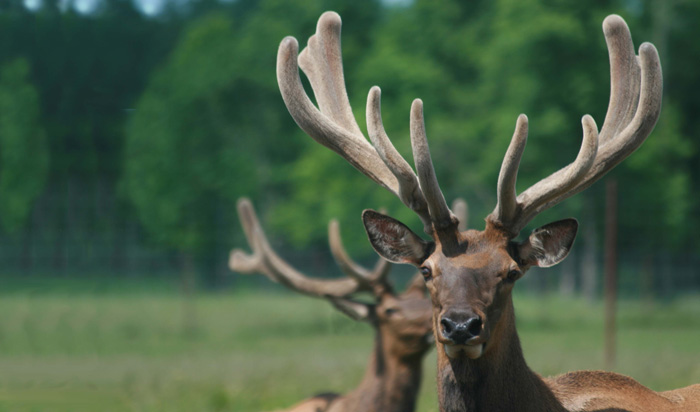
These hormones are also responsible for breeding behaviors. These antlers again start growing in April as the day’s timings also increase. The growing of antlers is the fastest tissue to grow in mammals. In the regrowing of the antler, there is vascular covering which is also known as velvet. This velvet helps to provide them the blood and oxygen for its growth.
What is the best time to look for elk sheds?
This all depends on the climatic conditions as it all depends on the shortening of days due to which the testosterone limits, which in turn provokes the osteoclast.
If you have private land, then you need to wait till late April as if you go too soon, there will be bulls that drop their antler late. But if the land is not private land, then you should to start looking for the elk’s sheds in early April as there would be many other people looking for the same. You should make multiple trips to find the elk sheds.
Shed Hunting With Dogs
If you go shed hunting alone, you can miss a lot of antlers. Luckily, a specially trained shed hunting dog can sniff them out and find more antlers for you – another great shed hunting tip! The shed hunting dog will help you in finding the antlers in the forest.
Good shed hunting dog breeds
1. Labrador Retriever: Labrador Retriever is known for being a well-rounded, versatile, and excellent dog breed. This breed tends to be extremely knowledgeable and quickly trained, which is really necessary to be a shed dog.
Labs are also well known for a great sense of smelling power. Moreover, they will listen to your commands immediately and give the best possible results.
2. Beagle: Beagles are very famous for hunting all over the world. Their keen nose is the organ that makes them unique from other dogs. Moreover, they are mostly preferred for those who wanted the dogs to be with them during the shed hunting.
If this dog once locks on to any scent, they keep on trying until they are successful, and this is the main reason why people choose them for shed hunting.
3. Golden retriever: These are the outstanding all-inclusive dogs and extended shed hunting companions. These are known for their easygoing nature and an unappeasable desire to satisfy their owner.
The breed can be very easily trained and was previously used in upland game hunting. This is what makes this breed a great choice for shed hunting.
4. American Foxhound: An American foxhound is a breed that is always finding prey. They can cover great distances in single outings, and this is the reason why American foxhounds are a great choice for shed hunting. Once they are trained from that very point, they become the shed hunting machine.
They can complete the mission without any kind of distraction once they are assigned the task.
5. Bloodhound: Bloodhounds are special because of their sensing power which is not that good in any other breed. These excel in any kind of tracking. Once it is given a task, it will constantly try finding it until he finds the prize.
6. German wirehaired pointer: These are specialized for bird hunting and are very well known for the sniff-out game ability. The greatest attribute of the german wirehaired pointer is their endless supply of energy.
This is a very good quality in a shed dog if the hunter is willing to search and far and wide on an outing.
7. Pointers: This is a breed that plants back more than 400 years. The dogs of this breed live longer and have an appreciated success rate too. This breed is very hardworking and loyal as well. Training this breed is not a very lengthy and difficult process.
8. Weimaraners: It has exceptional hunting skills. It can be focused even for a very long time too, as it is a very prey-minded dog. These are somewhat difficult to train, but once they are trained, they are very much focused.
Shed Hunting Packs
Having a sturdy backpack is a very important step for shed hunting. What happens if you strike antler shed gold and need to pack out a TON of antler sheds? You shouldn’t go into it thinking you can use any backpack. Some are definitely better than others. Check out these solid packs below – yet another one of our shed hunting tips!
Best shed hunting backpacks
Horn Hunter Full Curl System
ALPS OutdoorZ Extreme Hybrid X
Stansport Deluxe Freighter Aluminum Pack Frame
Stone Glacier EVO 3300

EXO MTN Gear K3 1800 PACK SYSTEM
Other things to consider when shed hunting
There are many other things that have to be carried with you that is water, GPS, snacks, antlers, and layers of clothing will be carried. The pack should be good in construction and very durable so that it can be used in harsh climatic conditions. It should also have adjustable straps for your comfort so that it could prevent irritation.
- Water: Water is also an important thing to be carried as you have a long journey to go and you don’t know whether you will get water in the way or not, so be prepared for all kinds of circumstances.
The other reason is that the body should be hydrated throughout your journey. It’s a long way to go. The water can be carried in the high-quality, reusable water bottle so that you can use that bottle again throughout your journey. Please avoid using the quality water bottle as they are destroyed very soon, and the water in them is also not kept cool for a longer time period.
- Boots Quality: The person should have an ideal shoe to go for hunting as you walk for miles. It would be very painful and uncomfortable if you choose the wrong boots. A quality pair of boots should be worn, it might be a little costly, but they will be comfortable, and you can walk long distances. It is important to wear the correct pair of shoes as the way is muddy, rocky, steep, and is often long.
- GPS: Sometimes a person can be lost in the journey. So do carry a GPS with you which can tell you the route to go. It can be very difficult to hunt sometimes as sometimes you are lost, and you don’t know where to go further. The GPS helps us in situations when the sun is dipped, and the daylight disappears. This is the situation when you don’t have to struggle to find the way as GPS tells us the right location. Very often, there are conditions when the antlers are in places that are unfamiliar to you, and there it helps us a lot.
- Snacks: Snacks should be carried along with you as they give you the energy to walk more. The snacks should be more in carbs as they will give to energy. Granola bars are the best option for snacks.
- Binoculars: Carrying binoculars helps us to save a lot of time. If you have a good pair of binoculars, you can see things from a distance, and you don’t need to visit the place where there are no antlers. This helps to look over the entire field and helps us scan the woods to confirm or reject any kind of strange-looking white thing. There should be a binocular harness too, as they give a comfortable fit and are situated in front of your chest.
- Additional layers: The person should definitely wear multiple layers of clothes as the antlers shed in the colder months. If the person has to stay for long, then the person needs to be comfortable and should not feel cold as that will lose his focus from work. The layers can be a jacket to be worn as it will give you enough warmth.
- Polarized Sunglasses: You should protect your eyes by wearing polarised sunglasses. These sunglasses will protect you from sunlight and the harmful rays that affect the person’s eyes. This also helps you scan all your surroundings and search for the places where you can find the antlers.
Conclusion
These days, shed hunting is on trend. Social media has definitely played a big role in introducing outdoor enthusiasts to the art of shed hunting. Other reasons are listed above. We hope this article armed you with all the necessary knowledge and best shed hunting tips to get you excited about the sport.
It is a good excuse to get out into the backcountry, and it’s also one of the best way to better understand animal habitats and seasonal patterns. It can also be rewarding as well.
As discussed above, there are many things that have to be kept in mind while searching for the coveted antler shed. The shed hunting tips discussed above are major points for when the elks shed their antlers, what we have to carry in our backpacks while hunting, what areas are best for searching for antler shed, how dogs can help us in shed hunting, etc.
All these shed hunting tips must be kept in mind whenever a person goes antler hunting. If you want to find sheds, then you have to take everything above into consideration. When you’re out in nature, anything can happen.
We hope you’ve enjoyed our ultimate guide to shed hunting tips! Now go load your packs with big heavy antlers!
